
Studio One or Reaper? Reaper or Studio One?
Both are exceptional software that offer great value for money. And yet, they’re often ignored when it comes to listing the best DAWs for EDM. Don’t ask me why!
As someone who’s used both interchangeably over the years, I feel compelled to review these two exceptional digital audio workstations, and give an overview as to which one might better fit your workflow, especially if you work in EDM.
- Studio One vs. Reaper: Short Answer
- Studio One vs. Reaper at a Glance
- Workflow & Ease of Use
- Audio Editing & Sample Manipulation
- MIDI Workflow
- Mixing & Mastering Tools
- Performance & CPU Efficiency
- Final Thoughts
Studio One vs. Reaper: Short Answer
If you want a DAW that's ready to go straight out of the box, choose the exceptional Studio One. If you're looking for more customization options and are willing to spend time learning how to create a fully personalized DAW, look no further than Reaper.
In my opinion, Studio One is probably the best value-for-quality DAW if you’re looking for an intuitive and easy-to-use environment; the interface is super-clean, everything is drag-and-drop, and things like arranging, layering samples, and mixing feel like a walk in the park.
Its latest version comes with spatial audio, advanced loop function, Dolby Atmos mixing, stem separation, and deep integration with Splice. At its current price, for what it offers, it’s a bargain.
Reaper might be less intuitive or aesthetically pleasing, but producers who want total control over their workflow will find everything they need here. It comes with a steeper learning curve than most DAWs but when you start setting up macros, building templates, or pushing it with a plethora of VSTs, you’ll soon realize Reaper is a robust and versatile tool for music production, at a fraction of the cost of most blazoned DAWs.
Studio One vs. Reaper at a Glance
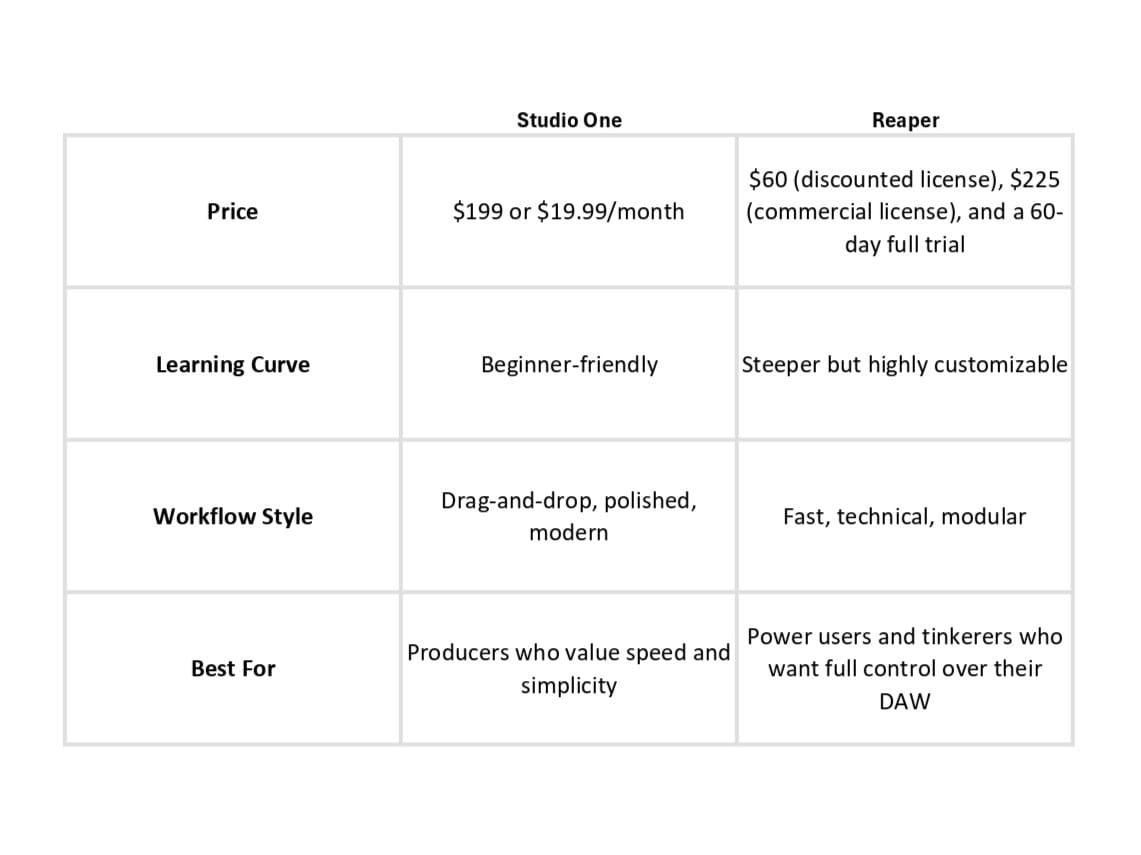
Workflow & Ease of Use
Studio One
As soon as you open Studio One the first time, you can see you’re entering a workspace already optimized and ready for production.
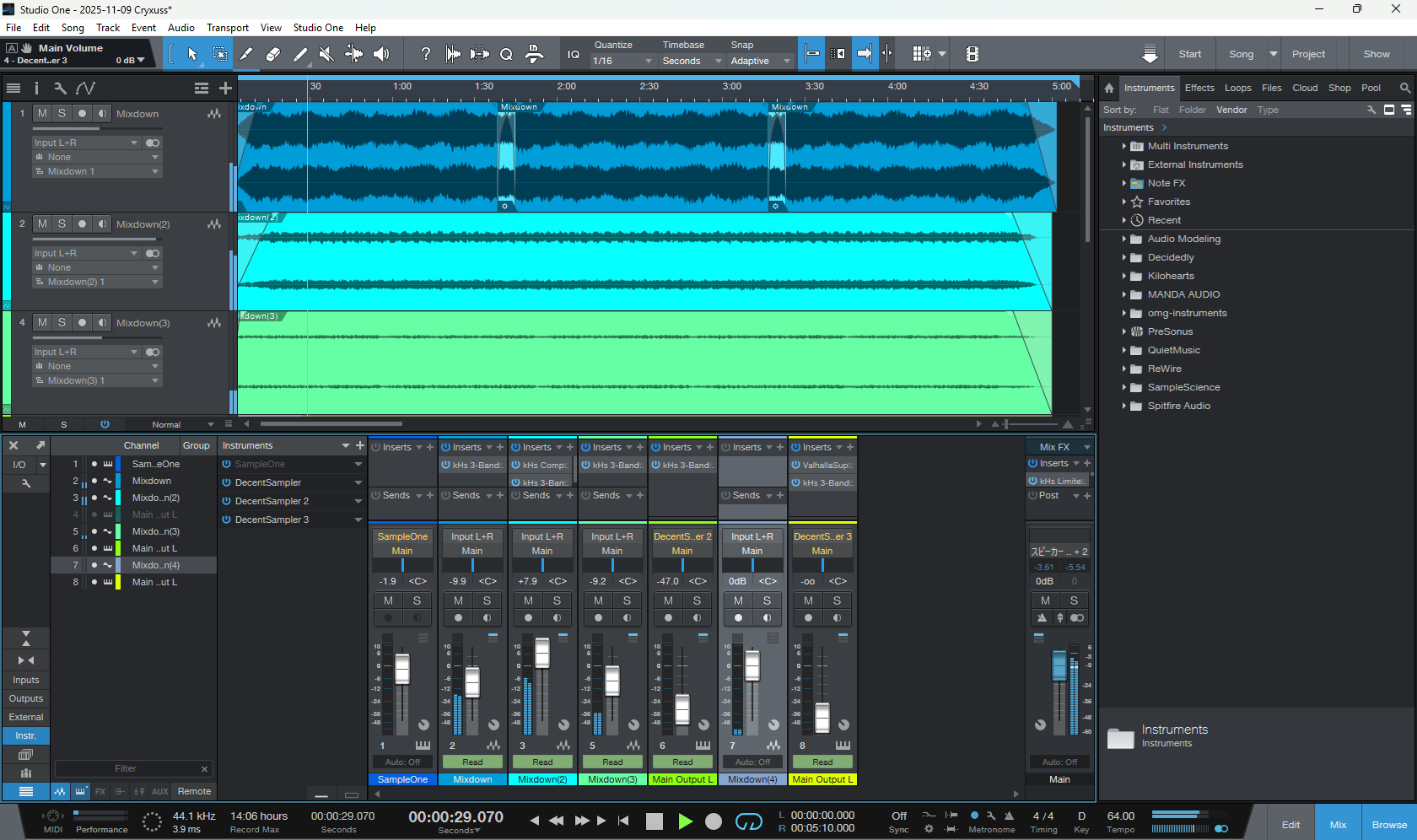
Most actions like loading instruments, creating buses, adding sends, and applying effects, are done by dragging items into place. That’s it.
On the upper right section of the interface you’ll find instruments, loops, effects, and everything else you need to make music. You can highlight your favorite effects to find them quickly, and the DAW supports most third-party plugins.
If you produce sample-based music, S1’s immediacy will enhance your workflow: you can drag a loop from your browser onto the timeline, stretch it, slice it, send it to the sampler, and start shaping a beat within seconds.
The recent addition of the Launcher, Studio One’s clip-launching grid, has made loop-based and sample-driven production even easier.
Reaper
Reaper, well, looks different than S1 when you open it. Out of the box it looks plain and uninspiring, and finding tools can be hard at first.
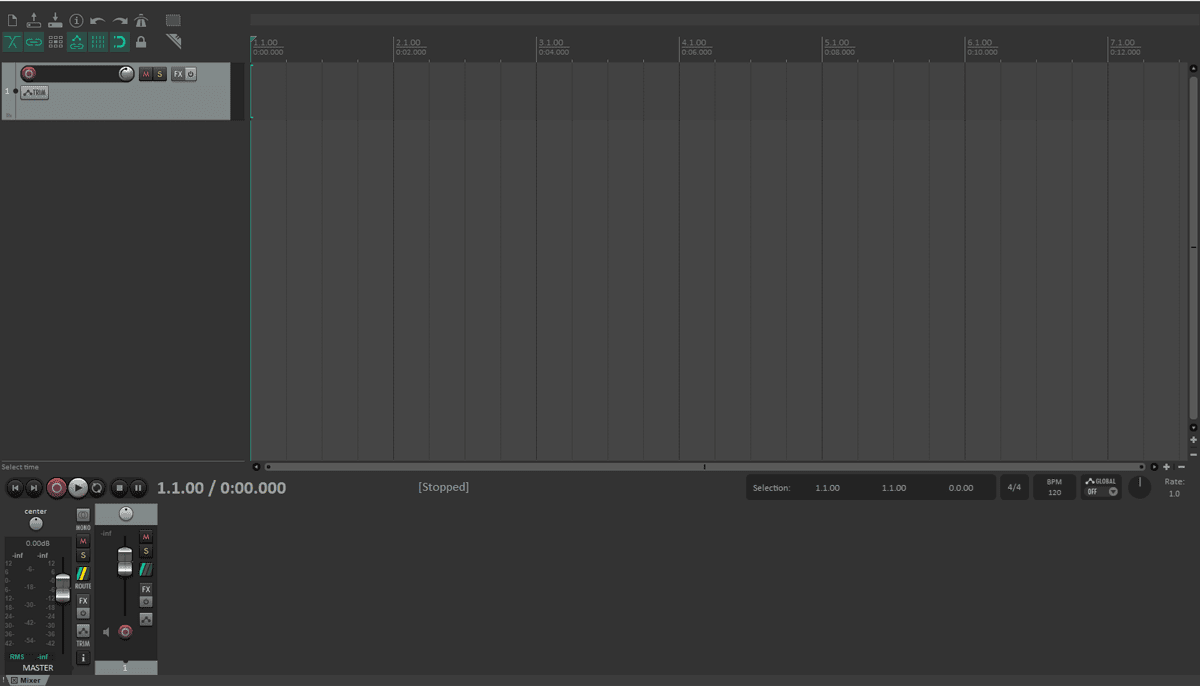
But here’s the thing: Reaper is designed to be customized by the user themselves. You can reconfigure almost everything: mouse behavior, toolbars, menu layouts, keyboard shortcuts, the visual theme, and even how the timeline reacts to edits.
You can also use themes created by other producers, which is great if you're not tech-savvy.
For sample users like us, scripts from ReaPack can automate sample slicing, create custom sampler workflows, reorganize editing tools, and offer virtually any function other DAWs provide natively.
Audio Editing & Sample Manipulation
Studio One
Studio One makes it incredibly simple to treat samples. You can detect transients and slice loops with a few clicks, and if you use Studio One 7, you also have the time-stretching tool Elastique Pro, designed to make stretching as simple and artifact-free as possible.
You can also drop sounds into Sample One or Impact XT for a quick and lightweight sampler workflow. If you’re working with chords or melodic samples, Chord Track can help you analyze and reshape harmonic material.

Reaper
On Reaper, instead of routing samples through a single sampler, you can process each audio clip independently, with its own FX chain, automation, and stretch mode. This “per-item” approach can be incredibly powerful if you’re a sound designer and experimental producer who wants to create interesting and unexpected samples.
If you want to build a custom slicing tool, a rhythmic rearranger, or a pseudo-sampler that treats each clip like its own instrument, Reaper gives you all the control you want. Spectral editing with optional extensions, razor edits, and advanced stretch markers: everything you need is right here, although it might take some time to make it all work for you!
MIDI Workflow
Studio One
Studio One makes working with MIDI as easy as it can be.
In my experience, it never failed to recognize a MIDI controller right away, and whether I play in parts live, record looped takes, or use the Pattern editor to program notes the DAW makes the setup easy and intuitive.
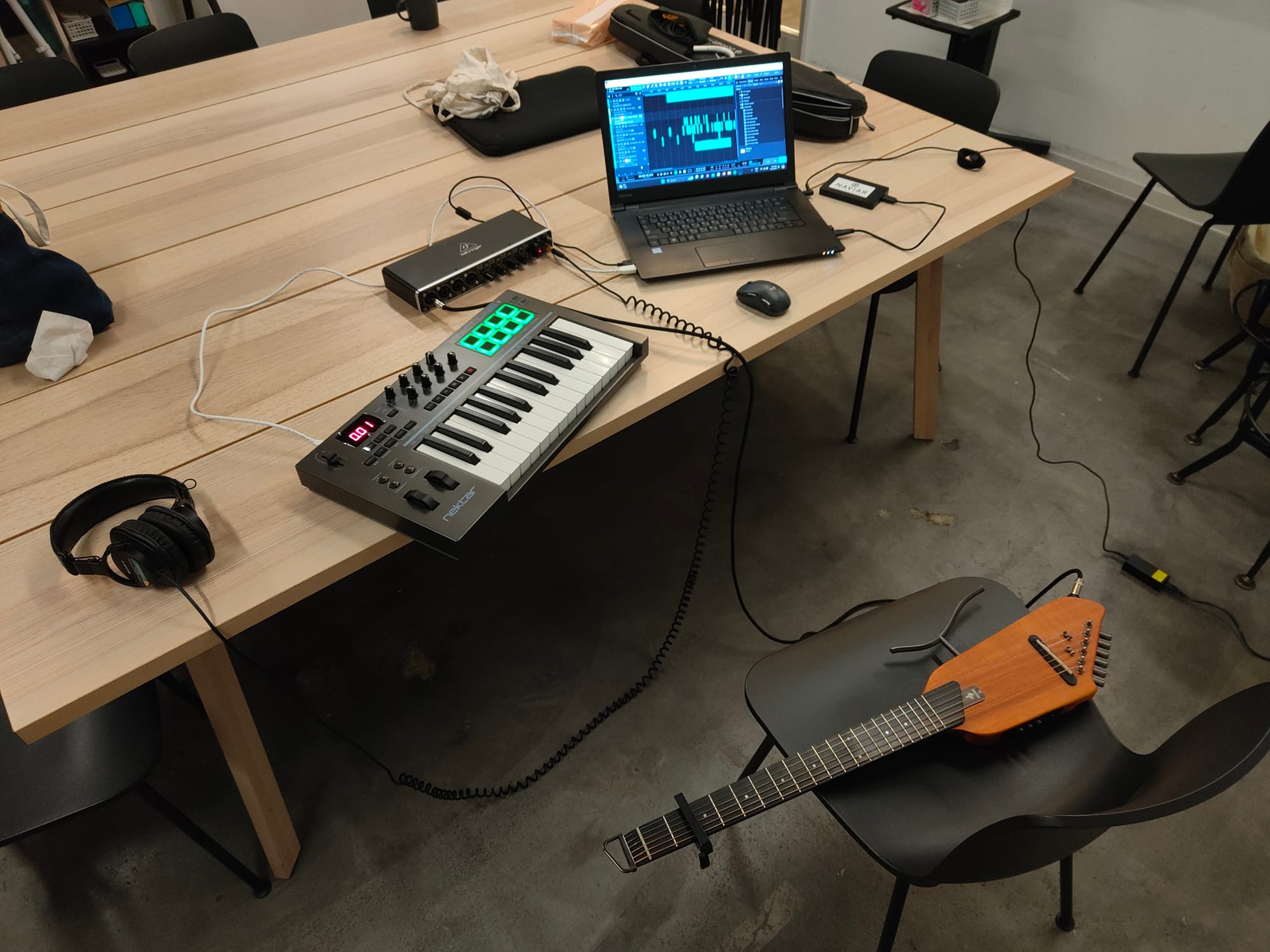
The piano roll is straightforward and quick to use, with great features like scale tools, polyrhythms, and easy editing for multiple tracks. Make sure you check out the Chord Track and arpeggiator too, which can help you arrange and try out new harmonies in no time.
Reaper
When I first started making music years ago, Reaper felt better for audio recording; now, it’s also a great option for working with MIDI. The MIDI editor has a lot of features, and while it may look overwhelming at first, you can endlessly personalize it with custom mouse shortcuts, MIDI scripts, by building macros to create variations, or even redesign the editor to fit your workflow.
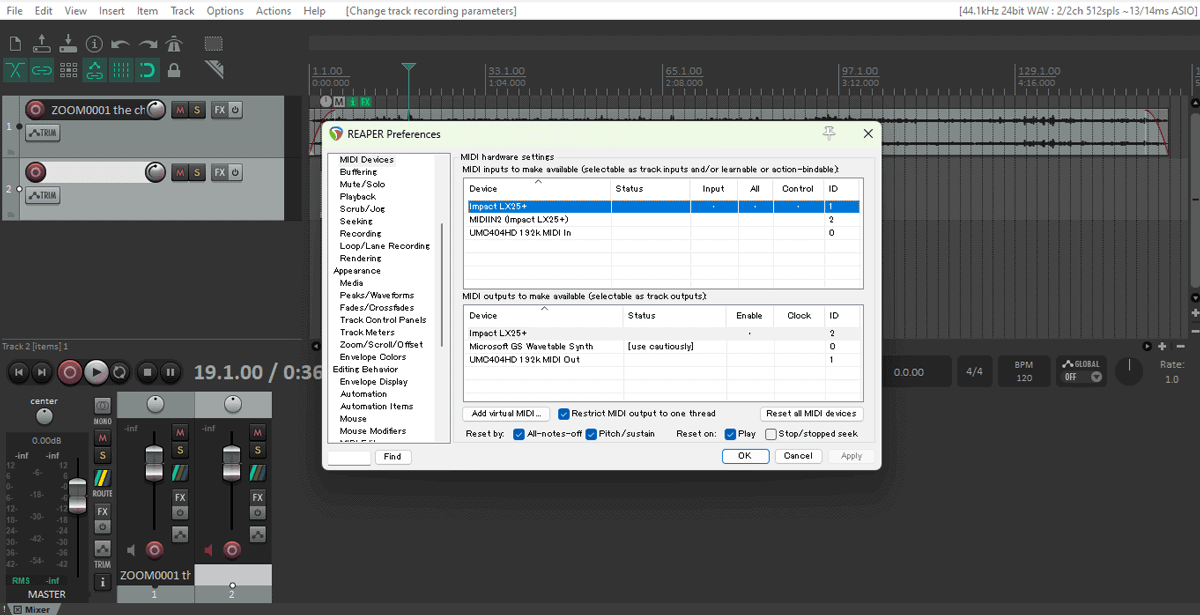
The piano roll is nearly as easy to use as FL Studio’s, and in my opinion, it’s much more powerful and customizable. While it’s not quite as straightforward as in Ableton Live, the level of control you get over your MIDI instruments is outstanding.
It takes some time to learn how everything works, but once you get familiar with the tools, you can do almost anything.
Mixing & Mastering Tools
Studio One
Like most professional DAWs, S1 gives you everything you need for mixing and mastering in one place.
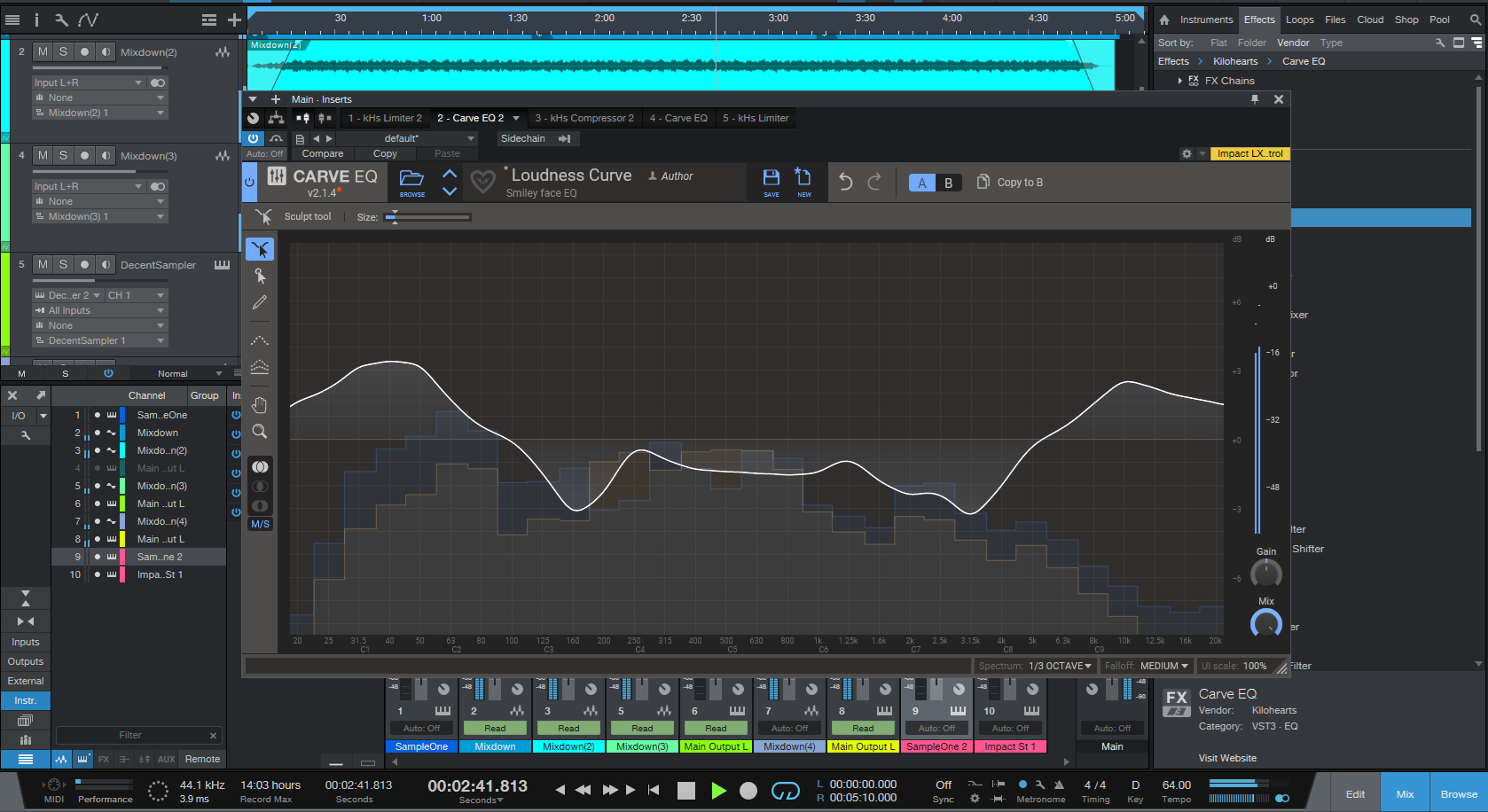
The mixer is powerful but easy to use, with unlimited tracks, VCA faders, flexible routing, drag-and-drop effects, and a workflow that feels straightforward and effortless.
As I mentioned already, now Studio One also supports spatial audio, including Dolby Atmos monitoring, which was a much-needed update. It even has built-in stem separation, so you can make rearrangements or isolate parts quickly, or create your own samples from existing tracks.
To me, Studio One really shines when it comes to mastering. The Project Page lets you put together an EP or album, add mastering effects, arrange tracks, manage metadata, and export in formats like WAV or DDP, all in one go.
For instance, if you update a mix, changes will carry over to the master section automatically, so you don’t have to rebuild your project.
I can’t imagine bedroom producers needing anything more than what S1 offers right now.
Reaper
Compared to Studio One, Reaper has a more technical and modular approach to mixing and mastering.
The folder-based routing doubles as a grouping system, so even less powerful computers can handle large sessions, and its routing matrix is among the most flexible you’ll find in any DAW.
Reaper includes a basic set of stock plugins, but they are all high quality; ReaEQ, ReaComp, ReaGate, and the rest of the suite are transparent, efficient, and can easily handle professional mixes. Plus, you can also add third-party instruments and effects without issues.
Thanks to its low UCP consumption, Reaper allows automation and real-time editing/processing even in large projects. For mastering, you can set up your own template with the Master Track, metering tools, and rendering options.
Performance & CPU Efficiency
Studio One
Personal experience here: Studio One works smoothly, until it doesn’t.
It definitely consumes more computer resources than Reaper because of its polished visuals, built-in effects and features, but it also has the tendency to crash when put under pressure. For large projects, be aware that you'll need a performing machine and an optimized environment to avoid issues.
Reaper
Reaper is one of the most efficient DAWs ever created, and I challenge you to make it crash! It launches in seconds, projects load instantly, and it runs smoothly even on low-end hardware. If you rely on CPU-intensive plugins, or if you record large multitrack sessions, Reaper will never let you down.
Final Thoughts
Let me conclude by saying I find both Studio One and Reaper exceptional DAWs. They offer great value for money, and once you learn how to use them properly, they’ll accompany you every step of your music production process.
They're made for two different types of musicians: Studio One is for those who want a DAW that works perfectly straight away, and allows them to quickly bring ideas to life whenever they come. Reaper is for those who want to create a unique production environment, where everything is designed to suit their needs; it might take some time, but the rewards can be exceptional.
Both Studio One and Reaper work magnificently with samples, so don’t forget to head over to Sample Focus and start experimenting with these two DAWs today.




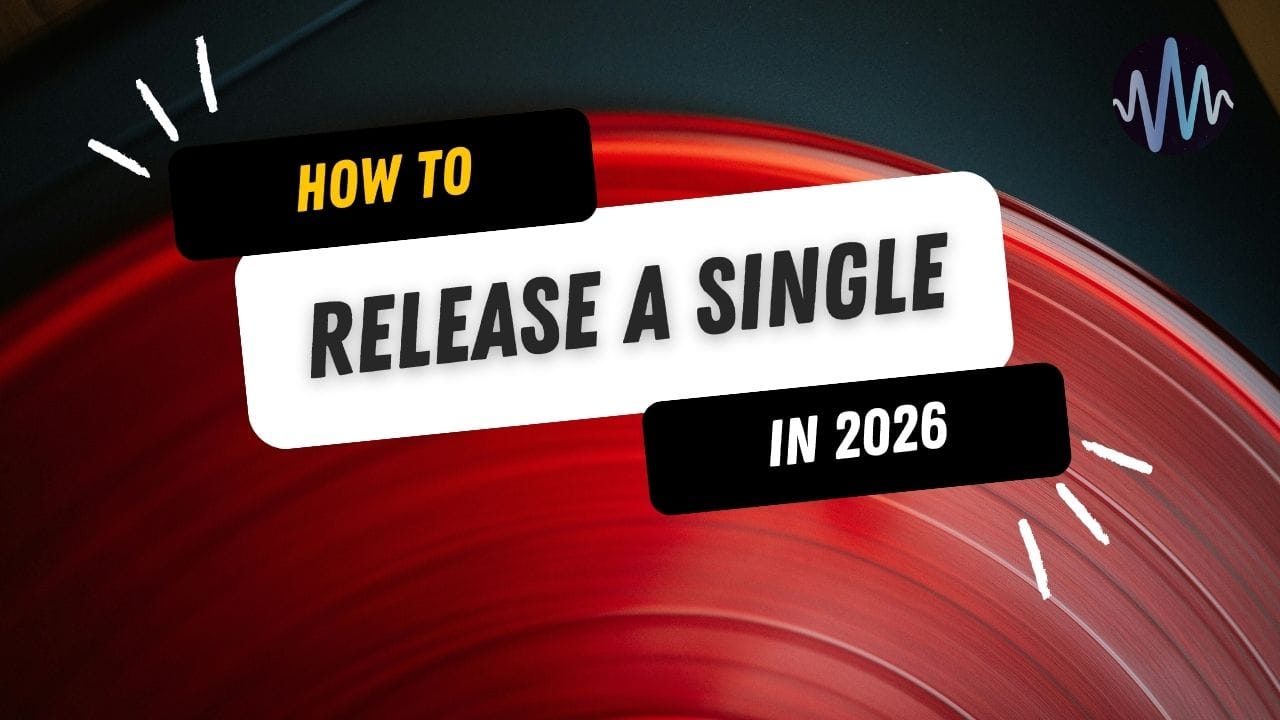
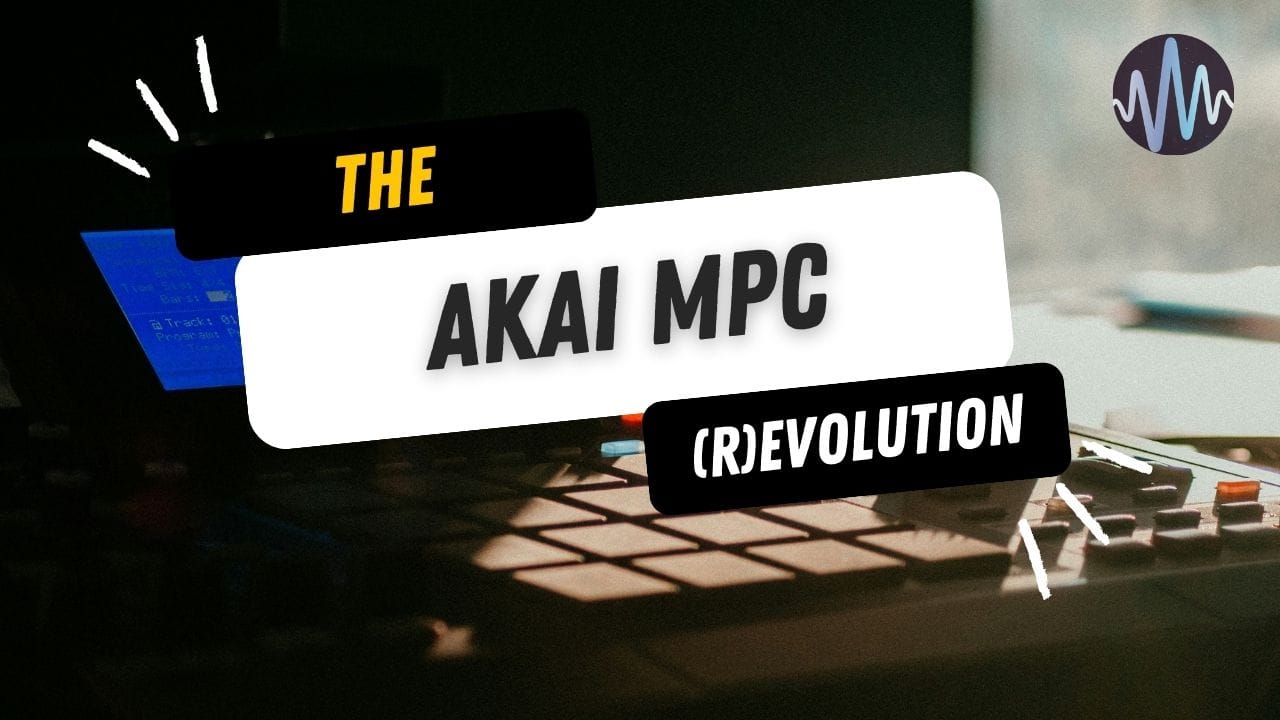
Comments